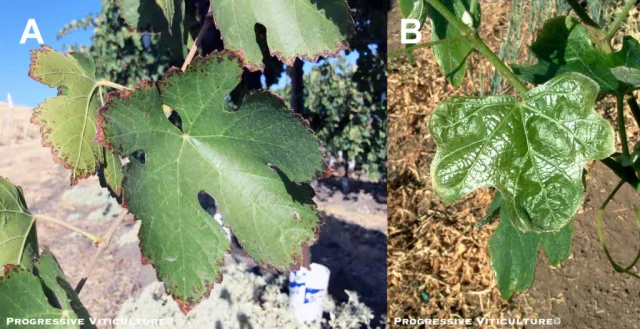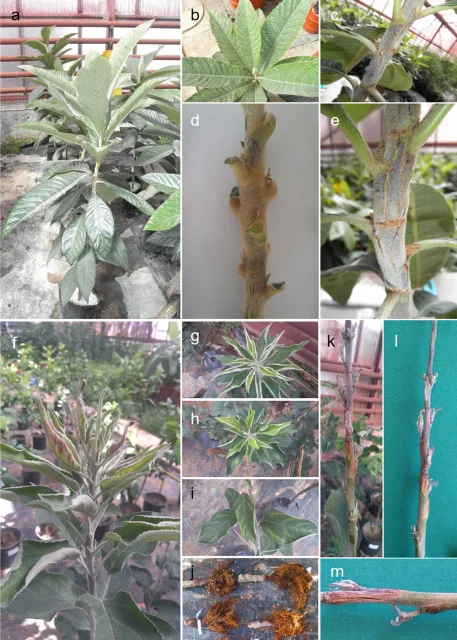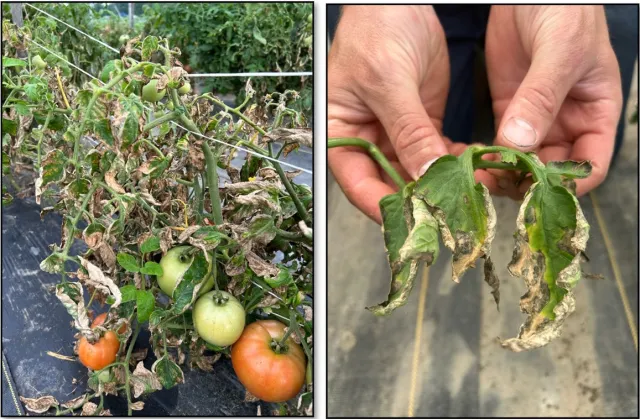Water Quality Technical Note - Boron (B)
What is Boron?
Boron (B) is a naturally occurring trace element found in rocks, soil, and water. In nature boron has never been found in its elemental state. Conversely, it mainly occurs in the form of boric acid and its salts (borates) or as boro-silicate.
Boron is highly mobile in water and can naturally leach into aquifers from the weathering of rocks and soils often resulting in higher boron levels in groundwater than in surface water. In groundwater, boron usually exists as boric acid or borate (e.g. borax) depending on the pH. By contrast, rivers, lakes, and reservoirs rarely contain high boron concentrations.
In California, wells near geothermal areas or ancient marine sediment, such as those found in Sonoma, Mendocino, and Lake Counties, often contain elevated boron. Main anthropogenic sources of water-soluble boron are agrochemicals (e.g., pesticides, fertilizers) and detergents.
Boron an Essential Micronutrient for Plants
Boron is an essential micronutrient for plant growth, playing a key role in cell wall synthesis and structure. However, it is only needed in relatively small amounts and when present in higher concentrations, it becomes toxic. Thus, boron acts as both a nutrient and a toxin depending on its levels. The range between boron toxicity and deficiency is narrow and thresholds vary among plant species.
Toxicity and Deficiency of Boron in Agricultural Crops
Toxicity
Boron toxicity symptoms vary between crop types. In many plants, boron toxicity initially appears as a burning or drying of leaf edges (tip burn) on older leaves. Over time, dead or yellowed patches spread between veins as boron continues to build up. Symptoms progress to necrosis (browning) and premature drop foliage.
Grapevines: Symptoms first appear as a narrow band of dark red spots on the margins of mature leaves. As toxicity worsens, these spots merge and the affected tissue dies. In young leaves, toxicity may cause the edges to die and curl inward, leading to a cupped appearance as the leaf continues to grow.

Figure 1. Mature leaf (A) and young expanding leaf (B) showing symptoms of boron toxicity. (Photo source: Progressive Viticulture©)
Fruit and nut trees (walnuts, pears, apples etc.): Foliage might not show classic burn symptoms but toxicity can appear in young, expanding foliage as yellowing or browning of leaf tips. Visual signs of toxicity may also include misshapen fruit, dieback of petioles and young twigs, and the production of a gum or exudate from limbs and trunks. These symptoms may reflect toxicity levels that limit crop growth and yield.

Figure 2. Symptoms of B toxicity in various plant species where B is relatively mobile via phloem tissue: loquat (a plant; b top leaves; c, d, e stem-middle to upper part), and apple (f plant; g, h top leaves; i middle leaves; j root under normal B (right) or high B (left); k, l and m stem-middle to upper part)
Photo Source: Landi, M. et.al. 2019)
Vegetable crops: Common toxicity symptoms include leaf cupping, yellowing, interveinal chlorosis, scorched or burned tips, and brown edges. Over time, the oldest leaves may dry out and fall off. Fruit may become misshapen, and yield can decline. The plant's overall growth may be stunted, with stems developing cracks or a corky texture. In severe cases, the plant may ultimately die.

Figure 3. Severe boron toxicity symptoms observed in tomato plants resulting from an accidental over-application of boron. The tissue sample showed a concentration of 980 ppm, which is significantly higher than the tolerance threshold for tomatoes. Photo by Saltanat Mambetova, MSU Extension.
Deficiency
Boron deficiency thresholds also vary among plant species. Crops that are planted on coarse, sandy soils and irrigated with low boron water (e.g. rain, surface water) can be susceptible to boron deficiency due to leaching of boron beyond the root zone. Crops such as brassicas, turnips, beets, and spinach have a high boron requirement while crops such as beans and peas have a low boron requirement. In grapevines and trees, boron deficiency symptoms may appear as stunted shoot growth, misshapen and yellowing leaves, burnt looking leaf tips, and misshapen fruit.
Boron Thresholds in Irrigation Water and Crop Tolerances
Boron’s high mobility in water allows for easy transport through irrigation systems and between soil and water. Without proper water management strategies, boron rich irrigation water may lead to boron accumulation in soils and pose a risk to plant health. Conversely, low boron irrigation water can be used to move excess boron out of the root zone. Managing irrigation water with high boron is challenging, and is often the primary cause of boron related problems. Since crop tolerances vary widely, it’s important for farmers to know both their irrigation water’s boron level and their crops’ boron sensitivity.
Table 1 summarizes the permissible limits of irrigation water quality for different crop groups based on boron concentration. Water is rated from excellent to unsuitable depending on how much boron is present, with lower thresholds required for sensitive crops and higher thresholds tolerated by semitolerant and tolerant crops. Table 2 provides the FAO guidelines on the relative sensitivity of specific crops to boron, grouping them into categories ranging from very sensitive to very tolerant.
Together, these tables illustrate the relationship between irrigation water quality standards and crop-specific boron tolerances, providing guidance on matching water sources with appropriate crops to minimize the risk of boron toxicity.
Table 1. Limits of boron in irrigation water. (Adapted from Rowe and Abdel-Magid, 1995)
Class of Water | Sensitive Crops (mg/L) | Semitolerant Crops (mg/L) | Tolerant Crops(mg/L) |
Excellent | < 0.33 | < 0.67 | < 1.00 |
Good | 0.33 – 0.67 | 0.67 – 1.33 | 1.00 – 2.00 |
Permissible | 0.67 – 1.00 | 1.33 – 2.00 | 2.00 – 3.00 |
Doubtful | 1.00 – 1.25 | 2.00 – 2.50 | 3.00 – 3.75 |
Unsuitable | > 1.25 | > 2.50 | > 3.75 |
Table 2. Relative Boron Tolerance Of Agricultural Crops (Adapted from Ayers, R. S., & Westcot, D. W. (1985))
Relative Boron Tolerance of Agricultural Crops | ||
Category | Boron Range (mg/L) | Crops |
Very Sensitive | < 0.5 | Lemon, Blackberry |
Sensitive | 0.5 – 0.75 | Avocado, Grapefruit, Orange, Apricot, Peach, Cherry, Plum, Persimmon, Fig (Kadota), Grape, Walnut, Pecan, Cowpea, Onion |
Sensitive (upper range) | 0.75 – 1.0 | Garlic, Sweet potato, Wheat, Barley, Sunflower, Bean (mung), Sesame, Lupine, Strawberry, Artichoke (jerusalem), Bean (kidney and lima),Groundnut/Peanut, Olive |
Moderately Sensitive | 1.0 – 2.0 | Pepper (red), Pea, Carrot, Radish, Potato, Cucumber |
Moderately Tolerant | 2.0 – 4.0 | Lettuce, Cabbage, Celery, Turnip, Bluegrass (Kentucky), Oats, Corn, Artichoke, Tobacco, Mustard, Clover (sweet), Squash, Muskmelon |
Tolerant | 4.0 – 6.0 | Sorghum, Tomato, Alfalfa, Vetch (purple), Parsley, Beet (red), Sugar beet |
Very Tolerant | 6.0 – 15.0 | Cotton, Asparagus |
Boron tolerance is affected by soil and climate conditions
It’s important to keep in mind that these thresholds are approximate, actual tolerance can vary with crop variety but also with soil and climate conditions.
Soil factors affecting availability of boron
Soil factors affecting availability of boron to plants are: pH, texture, moisture, temperature, organic matter and clay mineralogy. For example, one of the most important factors affecting the availability of boron in soils is pH because adsorption on soils is very dependent on solution pH. Boron adsorption by soils increased as a function of solution pH in the range of pH 3 to 9 and decreased in the range of pH 10 to 11.5. In addition, soil texture
Soil texture plays a major role in how much boron is available to plants. Sandy (coarse-textured) soils hold very little boron and are especially prone to boron deficiency under high rainfall because water leaches boron away. Clay soils, by contrast, contain more total boron since they can adsorb and store it, but the boron may not always be readily available to plants because it is tightly bound to the clay particles.
Climate factors affecting availability of boron
Cooler, more humid climates can sometimes reduce the effects of boron toxicity. This is because boron is moved from the roots to the leaves mainly through transpiration. When relative humidity is high, plants transpire less, which reduces the amount of boron transported to the green parts of the plant, especially young leaves and shoots.
Whereas in hot, arid regions, elevated boron concentrations in agricultural soils present a significant challenge. In these regions, natural rainfall is limited so there is little leaching to flush boron from the soil, allowing it to accumulate in the soil profile. Irrigation further increases soil moisture, which enhances boron availability to plants and can result in toxic levels.
Managing High Boron in Irrigation Water
Discovering that your well water has high boron can be daunting. Unfortunately, there’s not a simple treatment to remove boron from your well because boron compounds are highly soluble in water, and once they dissolve, they generally act as a salt and thus are difficult to remove from. Common treatment systems like water softeners, carbon filters and sediment filters cannot adequately remove boron from water. Advanced treatments like reverse osmosis or ion exchange can be effective, but they are often too expensive for the large volumes of water used in agriculture. Researchers are exploring new solutions, such as special absorbent materials and biological treatments, but these methods are not yet ready for use at a commercial level. However, there are several management strategies to mitigate boron issues:
- Blend or Source Alternate Water: If possible, dilute high-boron well water by mixing it with a cleaner water source (canal water, rainwater, groundwater from a tested well, or purchased water). Using a blend can bring the overall boron concentration down to acceptable levels. In some cases, growers alternate irrigation sources for short term use. Slightly poorer quality water can be tolerated if good-quality water is used periodically to leach the soil. For example, applying low-B water or relying on winter rains in the off-season can help flush the boron and prevent long-term buildup.
- Leaching and Drainage: Leaching is an effective strategy to reduce levels of boron in the root zone. Leaching is the process of percolating water through the soil profile to move solutes (e.g. boron, salt, nutrients, pesticides) below the root zone, the region of the soil where crop roots normally grow. During the growing season, leaching can be accomplished by applying extra water so that the amount exceeds the evapotranspiration requirement of the crop. However, boron is significantly more difficult to leach than other elements like chloride or sodium. Because it moves slowly with soil water, removing boron may require up to three times more leaching water than what would be needed to flush out an equivalent amount of chloride or salts. It’s important to keep in mind that this process will leach other important mobile nutrients as well, like nitrogen, which will need to be resupplied to avoid other deficiencies in the crop. To determine how much water to apply to meet your crop demands and the leaching requirements use check this resource.
Soil and Foliar Amendments: Certain soil management practices can help mitigate the impacts of high boron water and . Gypsum (calcium sulfate) can improve soil structure by displacing boron with calcium, creating strong bonds on soil binding sites. Improved soil structure increases infiltration which directly promotes boron leaching. Apply gypsum in the fall if possible so that it can be moved into the soil with winter rains.
If a boron deficiency is identified, borax can be applied as a soil application or foliar spray. Amendment rates depend on the cropping system and applications should be timed to minimize runoff and leaching. It’s important to obtain water quality, plant, tissue, and soil tests to accurately inform soil and nutrient management strategies. Over application of boron as a reaction to deficiency may lead to crop toxicity or boron contamination of surface and groundwater. Please contact your local UC Cooperative Extension office if you have questions about amendment or fertilizer rates.
- Crop Management: Farmers can reduce the impact of boron through crop and harvest management. For example, walnut trees irrigated with moderate boron levels (1 to 2 mg/L) usually produce nuts without damage, but by the end of the season the leaves often show severe toxicity symptoms, which can reduce tree vigor and long-term growth. Crops like alfalfa, grown in the Clear Lake area under much higher boron concentrations (>10 mg/L) avoid major problems because they are cut frequently, preventing boron from building up in the plant tissue. A similar situation has been seen on golf course greens in Calistoga, where frequent mowing under irrigation with high-boron water (2 to 3 mg/L) has kept toxicity symptoms from appearing. These examples show that regular harvesting or cutting can help crops tolerate boron levels that might otherwise cause harm.
- Monitoring: Finally, monitor soil and plant boron status. If you must use higher-boron water, regularly test your soil and plant tissue (e.g. petiole or leaf analyses) to track accumulation. Plant tissue testing and analysis is more accurate than soil testing for identifying boron toxicity and deficiencies in plants. For example, high soil boron levels don't necessarily cause plant toxicity if the crop's boron requirement or tolerance are also high. Once an imbalance is detected, soil testing can guide appropriate management strategies. Monitoring can warn you if boron exposure is nearing toxic levels and direct management strategies to minimize boron contamination to the environment.
Water Quality Testing and Resources in Northern California
Managing boron begins with knowing your water quality, since boron is invisible, clear water can still contain high boron that only a lab report will reveal. In general, well water should be tested for boron every three to five years in areas known to have elevated levels. Many labs offer agricultural water test which include boron along with other parameters like pH, conductivity, total dissolved solids, etc.
There are several reputable water testing labs that serve Northern California farmers and ranchers. For example:
A&L Western Laboratories, INC.
1311 Woodland Ave, Suite 1
Modesto, CA 95351
Phone: 209-529-4080
https://al-labs-west.com/water-analysis/
Alpha Analytical Laboratory in Ukiah, CA (Mendocino County) –
208 Mason St
Ukiah, CA 95482
Phone: 707.468.0401
ClientServices@alpha-labs.com
https://www.alpha-labs.com/services-listing
Alpha Analytical Laboratory in Petaluma, CA (Sonoma County) –
737 Southpoint Blvd
Suites C & D
Petaluma, CA 94954
Phone: 707.769.3128
NorthBay@alpha-labs.com
Brelje & Race Laboratories in Santa Rosa, CA (Sonoma County)
425 South E Street
Santa Rosa, CA 95404
Phone: 707.544.8807
contact@brlabsinc.com
Dellavalle Laboratory Inc.
502 Mace Boulevard, #2-B
Davis, CA 95618
800-228-9896
client.services@dellavallelab.com
https://dellavallelab.com/agricultural-services/
More labs can be found at: https://ucanrvineyards.neocities.org/
References
Ayers, R. S., & Westcot, D. W. (1985). Water Quality for Agriculture - 4. Toxicity Problems. FAO Irrigation and Drainage Paper 29. Food and Agriculture Organization of the United Nations. Retrieved from https://www.fao.org/4/t0234e/t0234e05.htm
Bolan, S., et al. (2023). Boron contamination and its risk management in terrestrial and aquatic environmental settings. Science of The Total Environment, 894, 164744.https://www.sciencedirect.com/science/article/pii/S0048969723033673
Bozca, F. D., & Leblebici, S. (2022). Interactive effect of boric acid and temperature stress on phenological characteristics and antioxidant system in Helianthus annuus L. South African Journal of Botany, 147, 391-399. https://www.sciencedirect.com/science/article/pii/S0254629922000424
Braum, S. (2016). Deficiency to Toxicity: The Role of Boron in California Crop Production. 2016 FREP Conference Presentations. California Department of Food and Agriculture. Retrieved from https://www.cdfa.ca.gov/is/ffldrs/frep/pdfs/2016FREPPresentations/2-4BraumBoron.pdf
Brdar-Jokanović, M. (2020). Boron toxicity and deficiency in agricultural plants. International journal of molecular sciences, 21(4), 1424.
Bulut, H. (2019). The Effect of Climatic Factors on Boron Nutrition of Plants. In Conference: 9th International Symposium on Atmospheric Sciences ATMOS, İstanbul, Türkiye. https://www.researchgate.net/profile/Hueseyin-Bulut-2/publication/337705961_The_Effect_of_Climatic_Factors_on_Boron_Nutrition_of_Plants/links/5de61913a6fdcc2837008962/The-Effect-of-Climatic-Factors-on-Boron-Nutrition-of-Plants.pdf
Cahn, M., & Bali, K. (2015). Managing Salts by Leaching. ANR Publication 8550. University of California Agriculture and Natural Resources. Retrieved from https://anrcatalog.ucanr.edu/pdf/8550.pdf
California State Water Resources Control Board. (2017). Boron (B) Constituent of Concern Groundwater Fact Sheet. GAMA Program, revised November 2017. Retrieved from https://www.waterboards.ca.gov/gama/docs/coc_boron.pdf
Connery, E. (2011). Boron in Irrigation Water. University of California Agriculture and Natural Resources. Accessed [September 2025]. https://ucanr.edu/sites/default/files/2020-03/83816.pdf
Goldberg, S. (1997). Reactions of boron with soils. Plant and Soil, 193, 35-48. Kluwer Academic Publishers. Retrieved from https://www.ars.usda.gov/arsuserfiles/20360500/pdf_pubs/P1510.pdf
Grattan, S. R., & Oster, J. (2002). Water Quality Guidelines for Trees and Vines. University of California, Davis, Department of Land, Air and Water Resources. Retrieved from https://www.lawr.ucdavis.edu/water-quality-guidelines-trees-and-vines
Grattan, S. R., & Oster, J. D. (1992). Water Quality Guidelines for Trees and Vines. Drought Tips, 92-19. California Department of Water Resources, Water Conservation Office; University of California; USDA Drought Response Office and Soil Conservation Service. Retrieved from https://cimis.water.ca.gov/Content/PDF/droughtTips92-19.pdf
Kratsch, H. (2012). Boron-and salt-tolerant trees and shrubs for Northern Nevada. UNCE Special Publication 12-04. Reno, NV: University of Nevada, Cooperative Extention. Online: http://www. unce. unr. edu/publications/files/ho/2012/sp1204. Pdf.
Lodi Growers. (n.d.) "Foliar Symptoms of Mineral Nutrient Problems." Accessed [September 2025]. https://lodigrowers.com/foliar-symptoms-of-mineral-nutrient-problems/.
Peryea, F. (2018). Boron Nutrition in Deciduous Tree Fruit Orchards. Washington State University, Tree Fruit Research and Extension Center. Accessed [September 2025]. https://treefruit.wsu.edu/boron/.
Phillips, B., Mambetova, S., and Hayden, Z. (2025) "Boron in Vegetables: Not Too Little, Not Too Much." Michigan State University Extension. MSU Extension News. Accessed [September 2025]. https://www.canr.msu.edu/news/boron_in_vegetables_not_too_little_not_too_much.
State Water Resources Control Board. (2017). Boron (B) fact sheet. https://www.waterboards.ca.gov/gama/docs/coc_boron.pdf
Tagliabue, M., Reverberi, A. P., & Bagatin, R. (2014). Boron removal from water: needs, challenges and perspectives. Journal of Cleaner Production, 77, 56-64. https://www.sciencedirect.com/science/article/pii/S0959652613008044
University of California Agriculture and Natural Resources. (n.d.). "Boron toxicity or other specific ions in excess." UC IPM Program. Accessed [September 2025]. https://ipm.ucanr.edu/PMG/GARDEN/PLANTS/DISORDERS/boronexcess.html.
Landi, M., Margaritopoulou, T., Papadakis, I.E. et al. Boron toxicity in higher plants: an update. Planta 250, 1011–1032 (2019). https://doi.org/10.1007/s00425-019-03220-4
